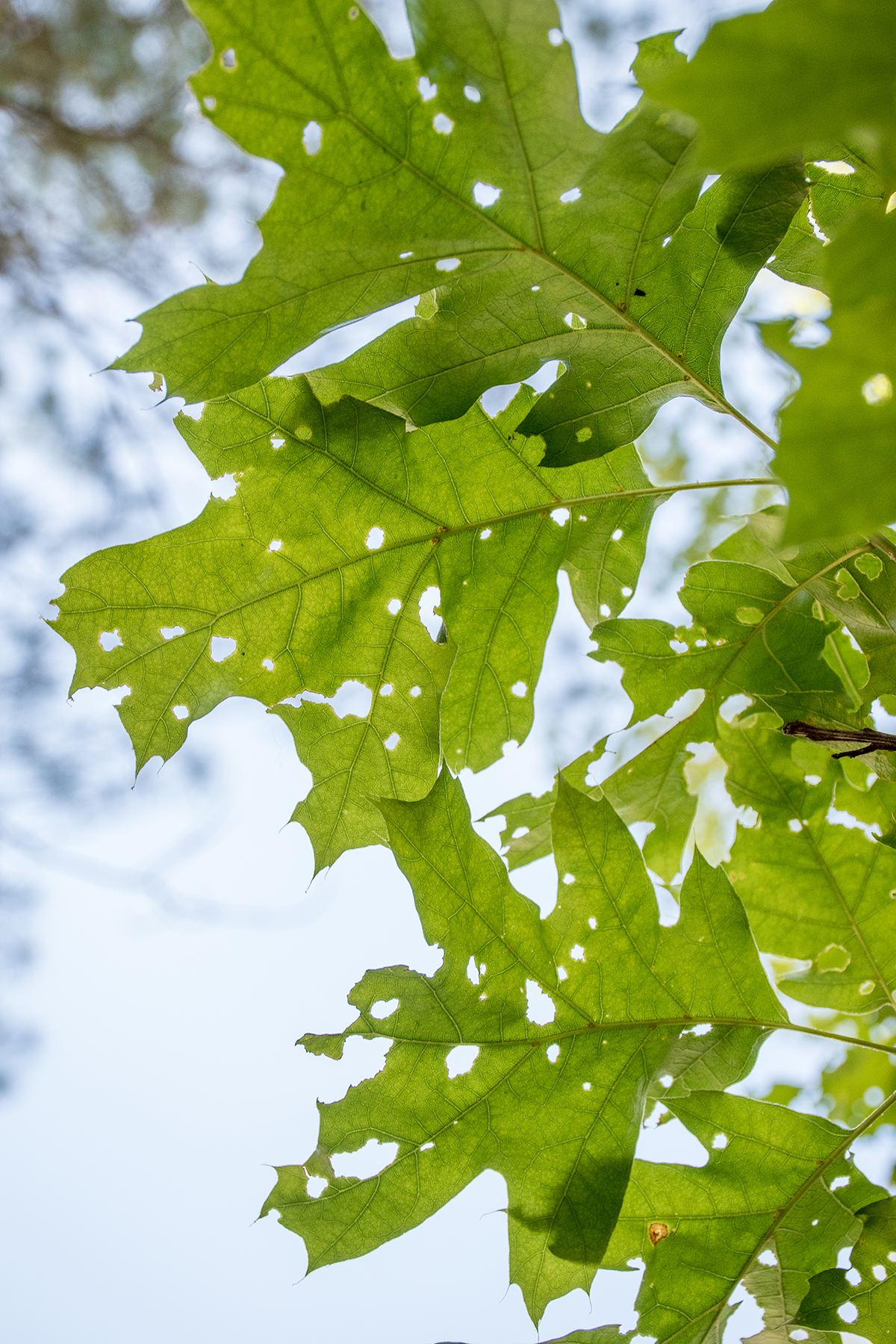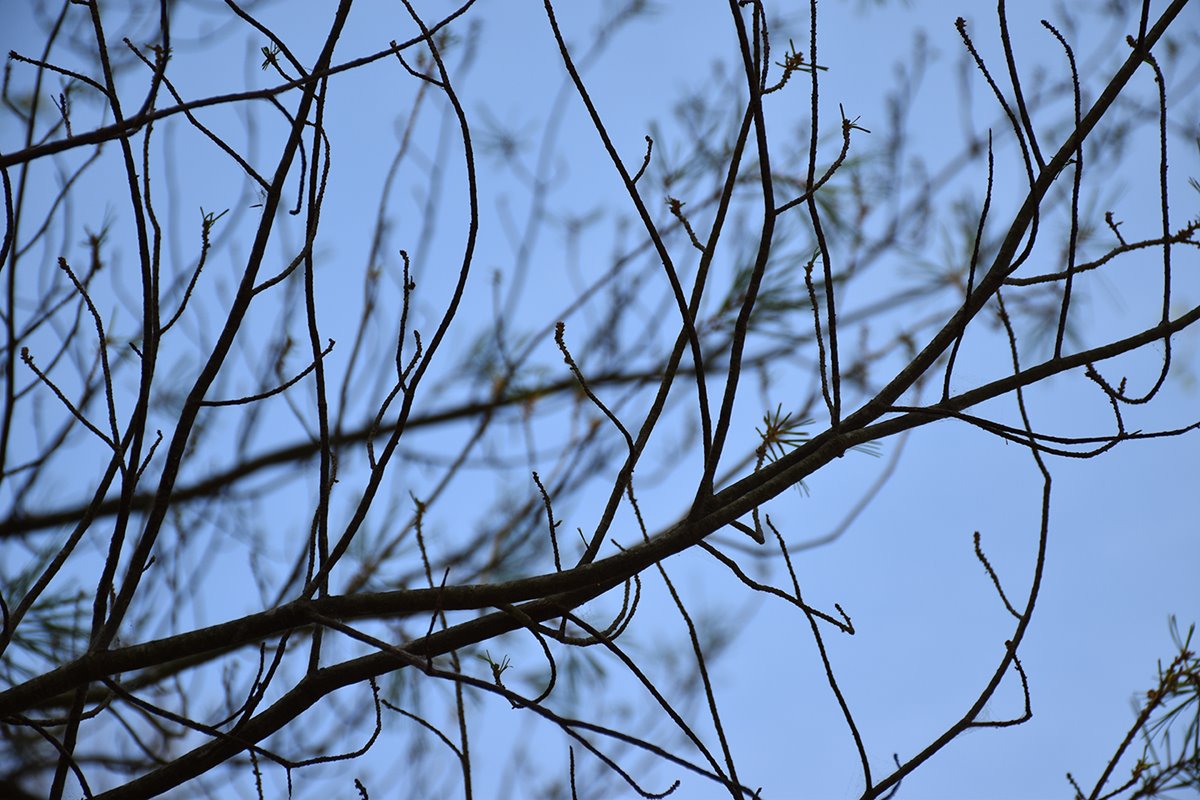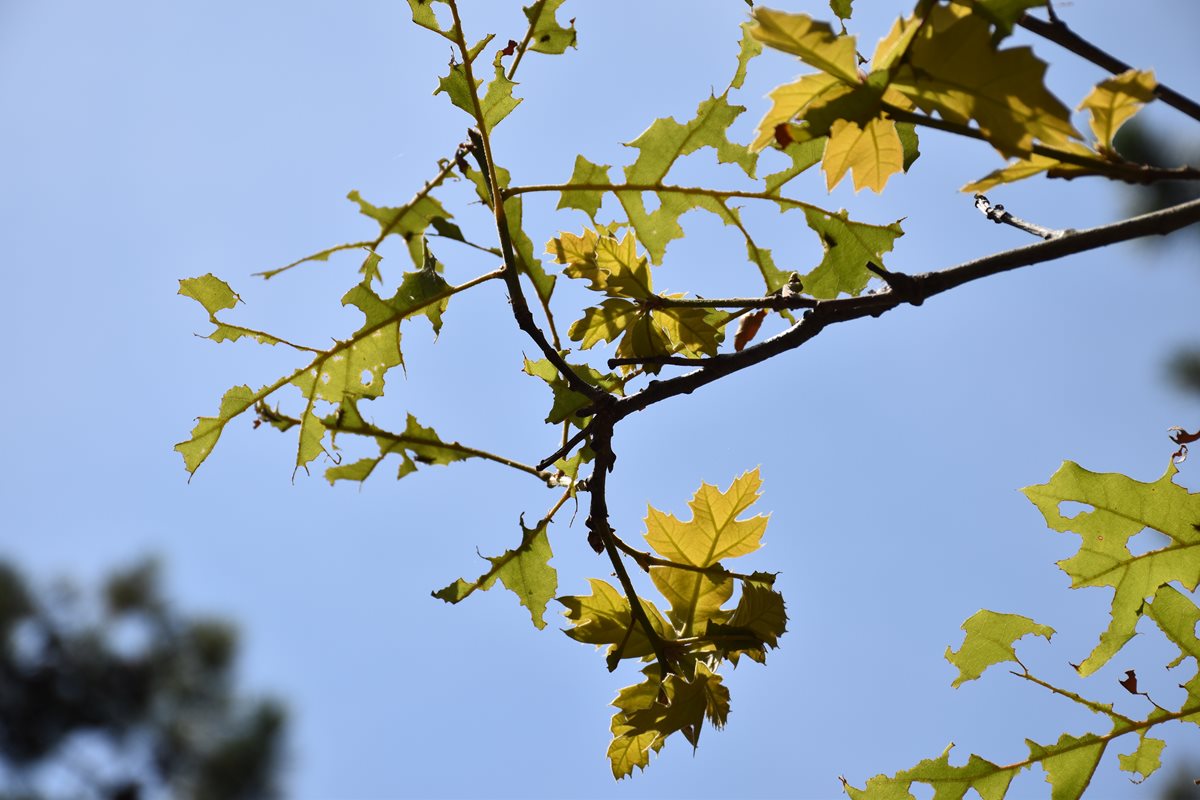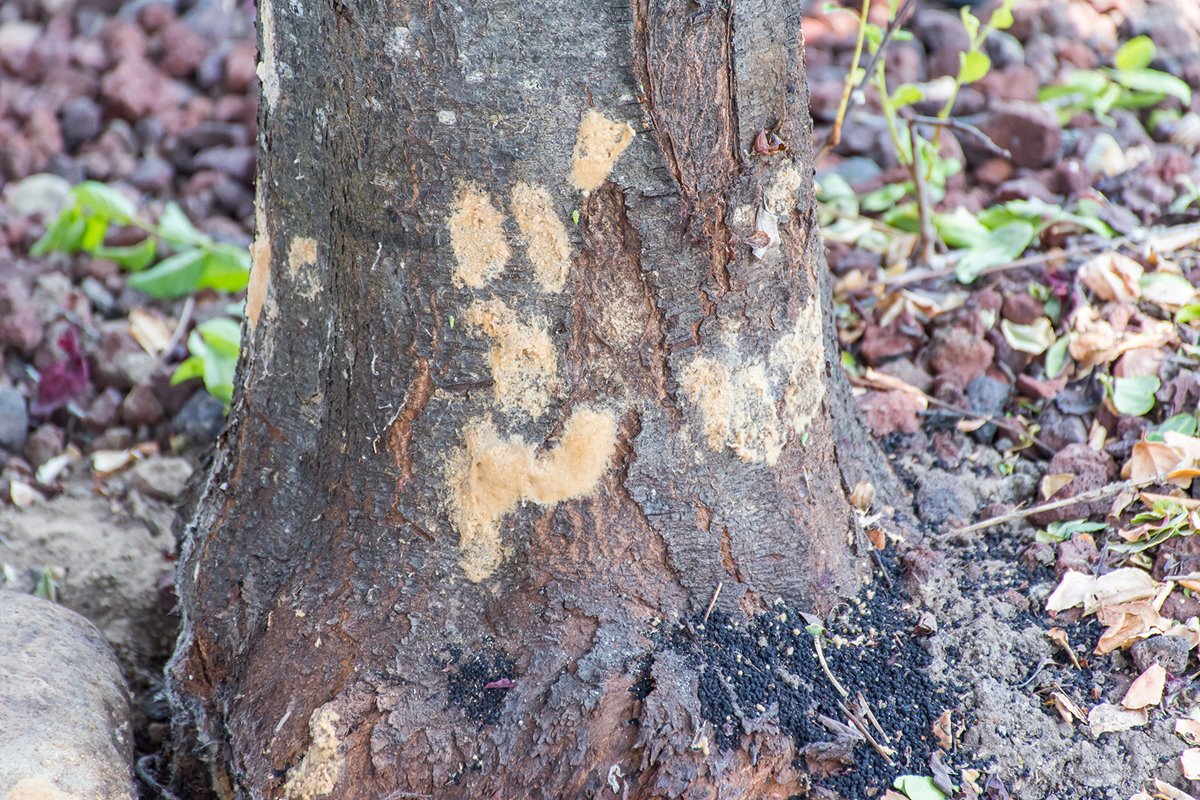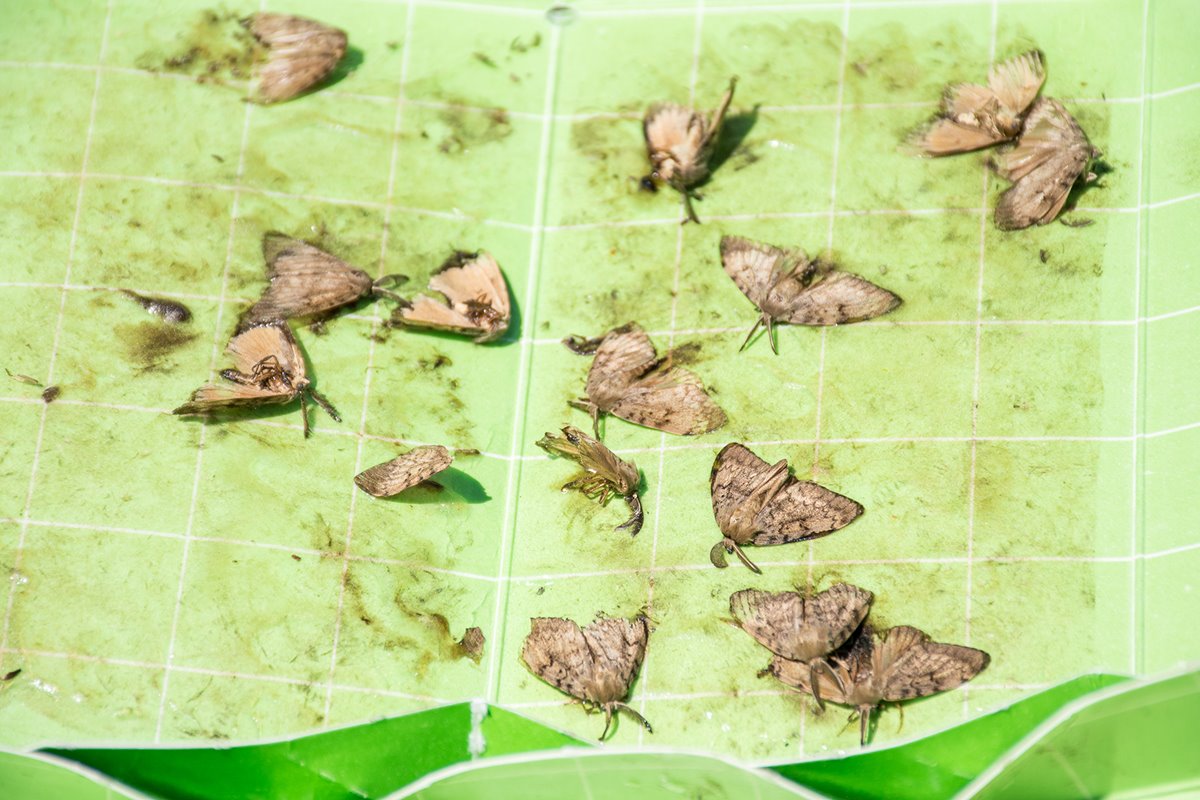Human Impacts
Humans also feel the negative effects of the spongy moth. Reduced shade and damaged trees can make it difficult or impossible to enjoy parks, forests, and even backyards. During caterpillar feeding, frass (poop) rains down from the trees, covering picnic tables, making sidewalks slippery, and surprising the unwary person drinking their morning coffee. In high numbers, caterpillars and droppings on the roads have even been known to cause car accidents. Finally, some people are allergic to caterpillar hairs and can get rashes from being in contact with them.
